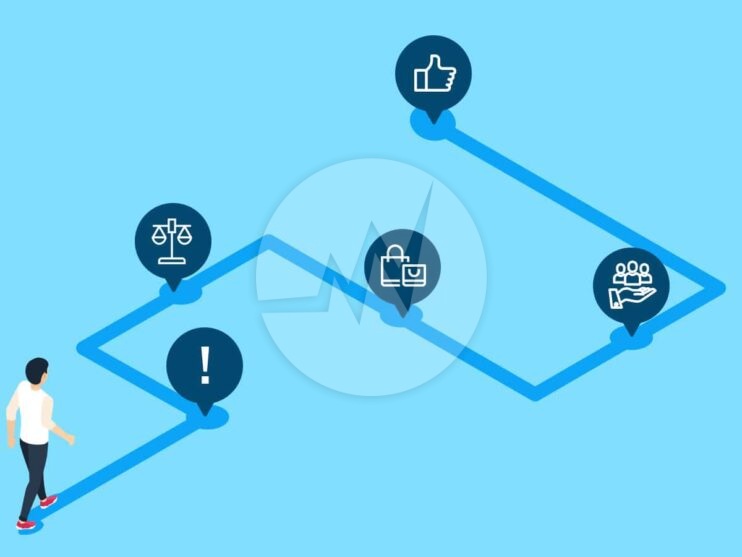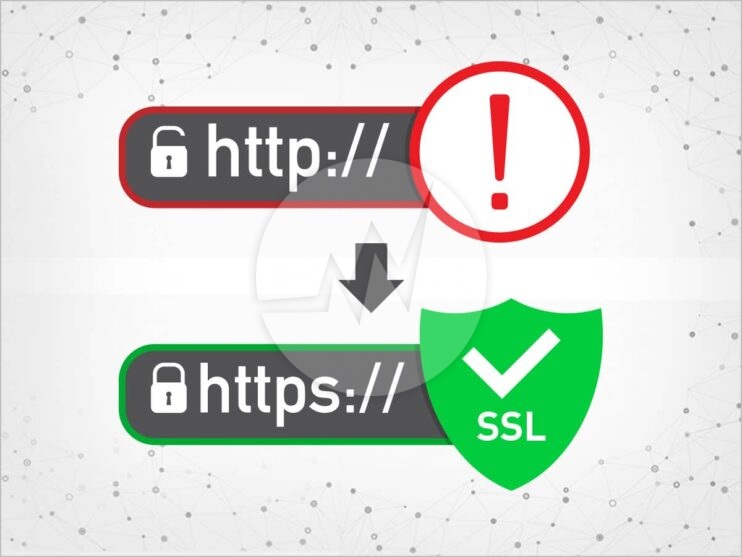How Customer Journey matters for SEO? Step by Step Guide to create an Effective SEO Customer Journey Strategy!

Search engine optimization (SEO) – with this keyword, many are already starting to get the checklists out. Keywords, content, backlinks, page speed and much more are written on the work plan.
However, these SEO measures are (only) the most common tools. Without knowing this customer and offering what customer is looking for at the right moment, we will not have any long-term success with all the SEO measures. Because in the best case we do a lot, but unfortunately often act past the customer.
The customer journey can help us to understand target customers much better and to use SEO measures more effectively.
What is customer journey in terms of online marketing?
Potential new customers – and we ourselves, as consumers – go through different phases in a purchase or booking process. Interested parties virtually embark on a journey from the first idea to the purchase.
The customer journey is a marketing term and describes the path that a customer takes to make a purchase. The customer journey map visualizes journey from the point in time when the potential customer becomes aware of an offer for the first time. On this journey to purchase, the interested party comes into contact with the offer or the company several times. This can be a click on a social media post, a Google ad or (completely offline) a verbal recommendation from a friend.
These points of contact are taken into account in the customer journey map. The phases of the customer journey are:
- Awareness – The customer recognizes problem/need; the customer becomes aware of an offer/company.
- Consideration – The customer is considering buying a product or booking a service.
- Conversion – the customer buys the product or service.
- Retention – The customer is satisfied with the product or service.
- Advocacy – The customer recommends the product or service.
SEO Strategy for mapping Customer Journey
The aim of search engine optimization of a website is that the right customers and the right search terms find the website in the top positions in the search results list. To achieve this goal effectively and in the long term, it is essential to deal intensively with the targeted group and their information needs.
For sustainable SEO success, it is crucial that the content of the website:
- That includes what customers are actually looking for. (Customer language)
- Your questions answered and added value.
- Is easily accessible and fits your situation.
This makes it clear that we need to take a closer look at our customers’ information needs. And this is not the same for all interested parties and at all times during the search. This is exactly where a customer journey map can help us to bring in some differentiation and structure at the same time.
How to apply SEO along with the customer journey?
Step 1: Define Buyers Personas and Customer Journey Map
The definition of target customers forms the basis of every marketing activity. The derivation and constant refinement of Buyers Personas is much more personal. Supplementing the mostly demographic data of a target customer with well-founded presumptions and information on customer behavior patterns, preferences and motivation make it easier to switch to the customer perspective.
The main thing is to understand the initial situation in which a potential customer is.
- Who is the ideal customer?
- What is its initial situation? (Problem, question)
- What is his goal, what does he want to achieve? (with the offer/product)
- What are his questions/hurdles regarding the product/service?
- What does the customer think? What does he like, what doesn’t he like?
It should also be differentiated what information needs a new customer and how a pre-informed customer behaves.
We define our ideal customer as well as possible and also consider which path takes from the first idea to the purchase.
- Where and how does the customer search?
- Where and on which channels are customer travelling and inspired?
- What information needs does it have in the individual phases?
- What is important to the customer when making a decision? What criteria help to the customer make the decision?
- What gives customer security and confidence when decided to buy?
Step 2: Keyword Analysis to track customer travel phase
Only with a thorough keyword analysis can we actually know which questions are asked and which search terms are entered in the Google search.
Among other things, we can use existing search terms here and use them as a starting point for keyword research.
Step 3: SEO Competitor Analysis
How good or bad competitors are with their own SEO strategy is crucial in order to define the appropriate paths and optimization measures. Well-optimized competitors require focused and differentiated SEO measures.
Here we are looking for possible content gaps that we may be able to fill. And we look at what content the competitors provide and how it was designed. The competitor view helps us a lot to see where we have a chance to stand out from the competition. It is not advisable to copy the exact same content, topics and keywords from the competition. Since these are already online, they already have a small visibility advantage. Working on the same topics with their own touch, personality and differentiated keywords is the better way.
Step 4: Create Suitable Content and Don’t Forget User Guidance
Now we are combining all the information we have gathered into a workable plan. The phases of the customer journey offer us a good framework.
Awareness – Where is the target customer travelling and can they be inspired? This can be, for example, on a social media channel.
As a provider, advice pages or blog posts on the typical questions are suitable in order to be easily found by customers in the search result list in this phase. Everything that provides a basic overview or basic information helps here.
Points of contact in the social media channels are also useful. It is not so much about the very specific properties of your own offer. Rather, at this point, we can draw the first attention of interested parties.
How can we draw attention to potentially interested parties?
Consideration – This is where information-related search terms from our keyword research come into play. The prospect thinks about the purchase. What information can we give the customer? What explanation is grateful for the customer? Which facts are decisive? This can be the price, components of the offer, the specific course of the cooperation and once again the achievement of the goals in short, concrete lists.
The customer is now fundamentally well informed and has decided to buy. At this point, however, customer not yet decided on a specific provider, so it is now a matter of convincing with expertise and authority. It is important for this customer that quickly get an overview to make the best decision. This should be the quality guideline for website content. It’s not about writing as much or as little as possible. Nor is it about the number of keywords in a text. The potential customer has questions that we both recognize and know and should answer in the customer’s language as best as possible. Check out the guide on the long-term benefits of content marketing.
Conversion – The customer chooses a provider. Now it is important to offer the buyer a smooth process and to provide them with content that is relevant to the deal – full focus on the essentials. This includes an uncomplicated, technically perfect booking/buying process – without any uncertainties or disruptions. There should be no “upselling” at any price because what is important is a satisfied customer who is happy with the decision.
Retention – The customer should not only be enthusiastic about the product but also about customer service. Good customer loyalty through valuable product tips (e.g. care instructions), additional information with added value and the offer of a newsletter are the basis for possible further purchases by the customer.
A follow-up email with a request as to whether everything worked out or worked is a nice guest that creates trust. Customer complaints should, therefore, be processed quickly and personally.
Advocacy – An all-round satisfied customer is happy to recommend the products and offers. We should make it as easy as possible for customers to recommend them in rating portals and social media channels, and save them long searches for company presences via direct links.
In summary: The customer has different information needs in every single phase of his journey. We should recognize these as well as possible and serve them with high-quality content. It is important to take into account that the researched keywords do not all fully fit every information need. Therefore, the keywords should be well structured and used in the appropriate texts.
At this point, it is helpful to have an overview of the intentions behind the search queries in the search engine. Google has defined three different categories of search intentions in its guidelines:
- Information-related search query: These search queries are often used for research purposes and usually have no specific purchase intent. Blog entries, instructions, definitions and lexicon entries are usually helpful for these searchers.
- Transaction-oriented search query: If the visitor is looking for an offer or product that customer would like to buy, ready for a transaction (purchase). customer has a clear idea of what look for and what want to do. These search queries are easy to recognize by the additional search terms “… buy”, “… book”, “… download” and similar. So, all searches in which the visitor wants to do something (buy, see, hear etc.) belong in this category.
- Navigation-oriented search query: With this search query, the searcher wants to navigate to a specific location. Searches for brand names or entering a company name fall into this category. In ecommerce it is advisable to create an information page on popular product brands (the products of which are offered in the shop).
Visibility in the search result list is directly related to the quality of the content and the satisfaction of user needs.
Step 5: Not Only Write Content, but Also Design Text
The design of the texts is often neglected. It is extremely important that we make it as easy as possible for our customers to consume our content. It doesn’t help to be “only” found because after all, we want customers who book or buy.
Therefore, I would like to give you some SEO General tips for text design:
- Respond to the situation of the reader. Pick it up where it is.
- Write short sentences and structure the text in short paragraphs. This increases legibility.
- Loosen up the text again and again with the help of bullets, graphics and pictures.
- Write as precisely as possible. Each sentence should contain new information.
- Are relevant keywords in the heading, in the introduction, in sub-headings, here and there in the text? Please always note: High-quality content and the comprehensibility and readability of the text are always in the foreground.
- Which text passages are suitable for creating meaningful internal links to other subpages?
- Formulate meaningful meta tags (titles and descriptions) for the pages. These have to be concrete and make you want more information. Use keywords here and do not promise anything in the preview that not actually found on the linked page. Check out the guide about On-page Search engine optimization strategy for your ecommerce website.
Conclusion
Search engine optimization not only means having a technically perfect website but also having an eye on loading times and keywords. SEO success depends crucially on how well we know our customers and what they are looking for. The customer journey opens our eyes to the path of our customer and the corresponding information needs in the respective phase.
If you are looking for Best SEO Strategies, Effective Search Engine Optimization Services, Content Marketing Strategies, Social Media Marketing Services, Digital Marketing Services, PPC Campaign Management Services and more, Please Explore our SEO Services!






